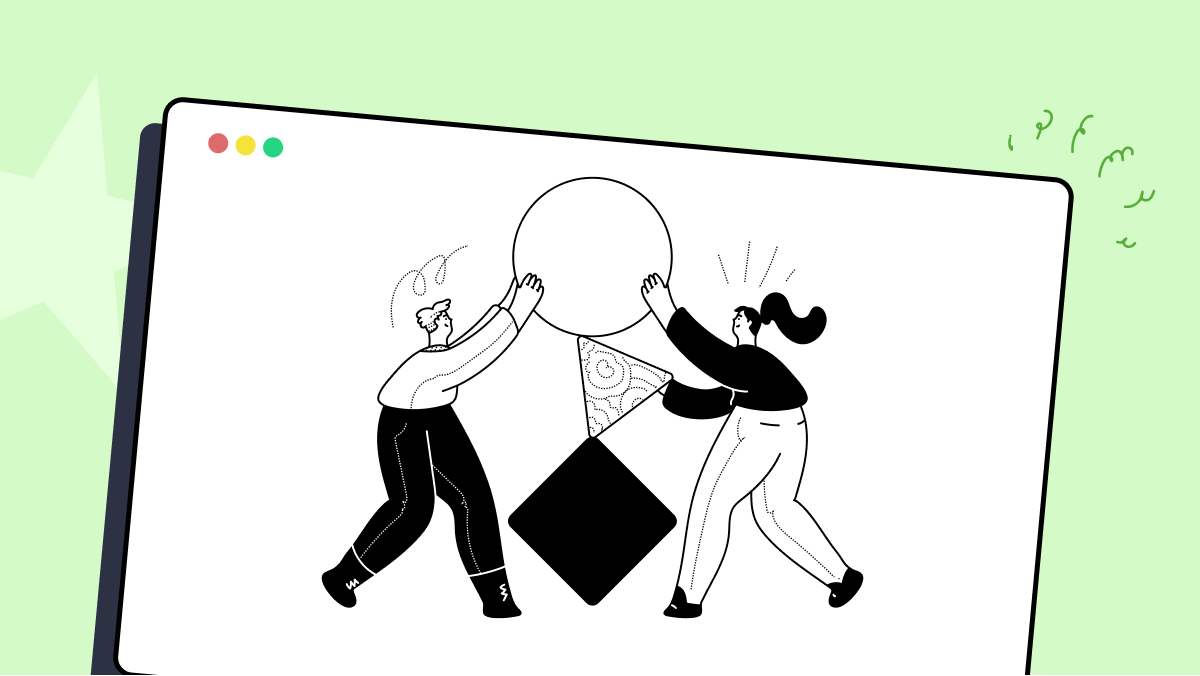How to use ProxyRemoteHandler class of com.intuit.karate.http package
Best Karate code snippet using com.intuit.karate.http.ProxyRemoteHandler
Source: ProxyRemoteHandler.java
...34/**35 *36 * @author pthomas337 */38public class ProxyRemoteHandler extends SimpleChannelInboundHandler<FullHttpResponse> {39 private static final Logger logger = LoggerFactory.getLogger(ProxyRemoteHandler.class);40 private final ProxyContext proxyContext;41 private final ProxyClientHandler clientHandler;42 private final RequestFilter requestFilter;43 private final ResponseFilter responseFilter;44 private final Channel clientChannel;45 private final FullHttpRequest initialRequest;46 protected Channel remoteChannel;47 protected FullHttpRequest currentRequest;48 public ProxyRemoteHandler(ProxyContext proxyContext, ProxyClientHandler clientHandler, FullHttpRequest initialRequest) {49 this.proxyContext = proxyContext;50 this.clientHandler = clientHandler;51 this.clientChannel = clientHandler.clientChannel;52 this.requestFilter = clientHandler.requestFilter;53 this.responseFilter = clientHandler.responseFilter;54 this.initialRequest = initialRequest;55 }56 @Override57 protected void channelRead0(ChannelHandlerContext ctx, FullHttpResponse response) throws Exception {58 if (logger.isTraceEnabled()) {59 logger.debug("<< {}", response);60 }61 ProxyResponse filtered = responseFilter == null ? null : responseFilter.apply(proxyContext, currentRequest, response);62 if (filtered == null || filtered.response == null) {...ProxyRemoteHandler
Using AI Code Generation
1import com.intuit.karate.http.ProxyRemoteHandler2import com.intuit.karate.http.HttpClient3import com.intuit.karate.http.HttpConfig4def config = new HttpConfig()5config.proxyRemoteHandler = new ProxyRemoteHandler()6config.proxyRemoteHandler.httpClient = new HttpClient(config)7config.proxyRemoteHandler.httpClient.init()8response.json().origin == 'ProxyRemoteHandler
Using AI Code Generation
1import com.intuit.karate.http.ProxyRemoteHandler2import com.intuit.karate.http.HttpHandler3 * def response = proxy.get('/hello')4 * match response == { 'hello' : 'world' }5 * def response = proxy.get('/hello', { 'name' : 'john' })6 * match response == { 'hello' : 'john' }7 * def response = proxy.get('/hello', { 'name' : 'john' }, { 'Accept' : 'application/json' })8 * match response == { 'hello' : 'john' }9 * def response = proxy.post('/hello', 'name=john', { 'Accept' : 'application/json' })10 * match response == { 'hello' : 'john' }11 * def response = proxy.post('/hello', { 'name' : 'john' }, { 'Accept' : 'application/json' })12 * match response == { 'hello' : 'john' }13 * def response = proxy.postXml('/hello', '<name>john</name>', { 'Accept' : 'application/json' })14 * match response == { 'hello' : 'john' }15 * def response = proxy.postMultipart('/hello', { 'name' : 'john' }, { 'Accept' : 'application/json' })16 * match response == { 'hello' : 'john' }17 * def response = proxy.postMultipart('/ProxyRemoteHandler
Using AI Code Generation
1* def handler = new com.intuit.karate.http.ProxyRemoteHandler()2* def response = karate.callOnce('classpath:example.feature', config)3* def handler = new com.intuit.karate.http.ProxyRemoteHandler()4* def response = karate.callOnce('classpath:example.feature', config)5* def handler = new com.intuit.karate.http.ProxyRemoteHandler()6* def response = karate.callOnce('classpath:example.feature', config)7* def handler = new com.intuit.karate.http.ProxyRemoteHandler()8* def response = karate.callOnce('classpath:example.feature', config)9* def handler = new com.intuit.karate.http.ProxyRemoteHandler()10* def response = karate.callOnce('classpath:example.feature', config)11* def handler = new com.intuit.karate.http.ProxyRemoteHandler()12* def response = karate.callOnce('classpath:example.feature', config)ProxyRemoteHandler
Using AI Code Generation
1* match response.body.contains('UP')2* def headers = { 'Access-Control-Allow-Origin': '*' }3* match response.body.contains('UP')4* def headers = { 'Access-Control-Allow-Origin': '*' }5* match response.body.contains('UP')6* def headers = { 'Access-Control-Allow-Origin': '*' }7* match response.body.contains('UP')8* def headers = { 'Access-Control-Allow-Origin': '*' }9* def response = proxyRemoteHandler.handle('httpProxyRemoteHandler
Using AI Code Generation
1def proxyRemoteHandler = new com.intuit.karate.http.ProxyRemoteHandler()2def proxy = proxyRemoteHandler.start()3def proxyUrl = proxy.getProxyUrl()4def proxyPort = proxy.getProxyPort()5def options = { proxy: [ url: proxyUrl, port: proxyPort ] }6def response = http('path/to/service', config, options)7def proxyResponse = proxyRemoteHandler.getResponse()8proxyRemoteHandler.stop()9def proxyRemoteHandler = new com.intuit.karate.ProxyRemoteHandler()10def proxy = proxyRemoteHandler.start()11def proxyUrl = proxy.getProxyUrl()12def proxyPort = proxy.getProxyPort()13def options = { proxy: [ url: proxyUrl, port: proxyPort ] }14def response = http('path/to/service', config, options)15def proxyResponse = proxyRemoteHandler.getResponse()16proxyRemoteHandler.stop()17def proxyRemoteHandler = new com.intuit.karate.ProxyRemoteHandler()18def proxy = proxyRemoteHandler.start()19def proxyUrl = proxy.getProxyUrl()20def proxyPort = proxy.getProxyPort()21def options = { proxy: [ url: proxyUrl, port: proxyPort ] }22def response = http('path/to/service', config, options)23def proxyResponse = proxyRemoteHandler.getResponse()24proxyRemoteHandler.stop()25def proxyRemoteHandler = new com.intuit.karate.ProxyRemoteHandler()26def proxy = proxyRemoteHandler.start()27def proxyUrl = proxy.getProxyUrl()28def proxyPort = proxy.getProxyPort()29def options = { proxy: [ url: proxyUrl, port: proxyPort ] }30def response = http('path/to/service', config, options)Blogs
Check out the latest blogs from LambdaTest on this topic:
I routinely come across test strategy documents when working with customers. They are lengthy—100 pages or more—and packed with monotonous text that is routinely reused from one project to another. Yawn once more— the test halt and resume circumstances, the defect management procedure, entrance and exit criteria, unnecessary generic risks, and in fact, one often-used model replicates the requirements of textbook testing, from stress to systems integration.
With the rise of Agile, teams have been trying to minimize the gap between the stakeholders and the development team.
Have you ever visited a website that only has plain text and images? Most probably, no. It’s because such websites do not exist now. But there was a time when websites only had plain text and images with almost no styling. For the longest time, websites did not focus on user experience. For instance, this is how eBay’s homepage looked in 1999.
Automation Testing Tutorials
Learn to execute automation testing from scratch with LambdaTest Learning Hub. Right from setting up the prerequisites to run your first automation test, to following best practices and diving deeper into advanced test scenarios. LambdaTest Learning Hubs compile a list of step-by-step guides to help you be proficient with different test automation frameworks i.e. Selenium, Cypress, TestNG etc.
LambdaTest Learning Hubs:
- JUnit Tutorial
- TestNG Tutorial
- Webdriver Tutorial
- WebDriverIO Tutorial
- Protractor Tutorial
- Selenium 4 Tutorial
- Jenkins Tutorial
- NUnit Tutorial
- Jest Tutorial
- Playwright Tutorial
- Cypress Tutorial
- PyTest Tutorial
YouTube
You could also refer to video tutorials over LambdaTest YouTube channel to get step by step demonstration from industry experts.
Most used methods in ProxyRemoteHandler
Try LambdaTest Now !!
Get 100 minutes of automation test minutes FREE!!




